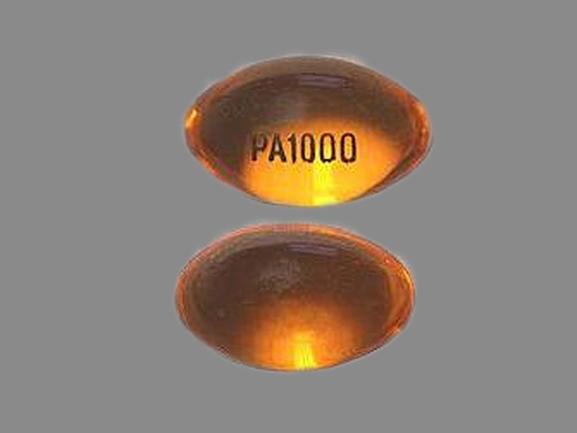Ethosuximide Dosage
Medically reviewed by Drugs.com. Last updated on Jul 15, 2025.
Applies to the following strengths: 250 mg; 250 mg/5 mL
Usual Adult Dose for:
Usual Pediatric Dose for:
Additional dosage information:
Usual Adult Dose for Seizures
Initial dose: 500 mg orally once a day
- Increase dose in small increments, for example 250 mg daily every 4 to 7 days, until optimal seizure control with minimal side effects is achieved
Comments:
- Doses exceeding 1.5 g per day should be administered only under strict supervision of a physician.
- For higher daily doses, consider twice a day dosing.
- This drug may be administered in combination with other anticonvulsants when other forms of epilepsy coexist.
Use: For the control of absence (petit mal) seizures.
Usual Pediatric Dose for Seizures
3 to 6 years old:
Initial dose: 250 mg orally once a day
6 years or older:
Initial dose: 500 mg orally once a day
Titration: Increase dose in small increments, for example 250 mg daily every 4 to 7 days, until optimal seizure control with minimal side effects is achieved
Maintenance dose: Individualized; generally, a dose that provides efficacy and tolerability with a plasma level within the accepted therapeutic range (40 to 100 mcg/mL)
Optimal dose for most pediatric patients: 20 mg/kg/day; some authorities have found doses up to 40 mg/kg/24 hours are needed to obtain therapeutic levels
Comments:
- Doses exceeding 1.5 g per day should be administered only under strict supervision of a physician.
- For higher daily doses, consider twice a day dosing.
- This drug may be administered in combination with other anticonvulsants when other forms of epilepsy coexist.
Use: For the control of absence (petit mal) seizures.
Renal Dose Adjustments
Renal disease: Administer with extreme caution
Liver Dose Adjustments
Liver disease: Administer with extreme caution
Dose Adjustments
Therapeutic blood level monitoring:
- Accepted therapeutic range: 40 to 100 mcg/mL
Concomitant Use with other Antiepileptic Drugs
- Periodic serum level determinations of antiepileptic drugs may be necessary
- This drug may elevate phenytoin serum levels
- Valproic acid may both increase and decrease ethosuximide levels
Changes to Dosing Regimen:
- Dose changes, as well as, the addition and/or elimination of other antiepileptic medications should be done slowly; avoid abrupt withdrawal
Precautions
NARROW THERAPEUTIC INDEX:
- This drug should be considered a narrow therapeutic index (NTI) drug as small differences in dose or blood concentrations may lead to serious therapeutic failures or adverse drug reactions.
- Generic substitution should be done cautiously, if at all, as current bioequivalence standards are generally insufficient for NTI drugs.
- Additional and/or more frequent monitoring should be done to ensure receipt of an effective dose while avoiding unnecessary toxicities.
CONTRAINDICATIONS:
- Hypersensitivity to succinimides
Safety and efficacy have not been established in patients younger than 3 years.
Consult WARNINGS section for additional precautions.
Dialysis
Data not available
Other Comments
Administration advice:
- Take orally
- An adequately calibrated measuring device such as an oral syringe, should be used to measure liquid doses
Storage requirements:
- Oral solution: Protect from freezing and light
General:
- Using this drug as monotherapy in patients with mixed type of epilepsy may increase the frequency of grand mal seizures in some patients.
- Abrupt withdrawal may precipitate seizures; as with other antiepileptic drugs, dose increases and decreases should proceed slowly.
Monitoring:
- Blood counts, periodically, and if signs and/or symptoms of infection develop
- Urinalysis periodically
- Liver function tests periodically
- Monitor for the emergence or worsening of depression, suicidal thoughts or behavior, and/or any unusual changes in mood or behavior
- Monitor for rash
Patient advice:
- Read the US FDA-approved patient labeling (Patient Information).
- Patients should understand the importance of strictly adhering to their dosing regimen.
- Patients should be appropriately counseled regarding the performance of potentially hazardous tasks.
- Patients should be instructed to contact their healthcare provider promptly if they develop a rash or signs and symptoms of an infection.
- Patients and/or caregivers should monitor for the emergence or worsening of depression, suicidal thoughts or behavior, and/or any unusual changes in mood or behavior; behaviors of concern should be reported promptly.
- Women of childbearing potential should speak with their physician if they are or intend to become pregnant, or are breastfeeding.
More about ethosuximide
- Check interactions
- Compare alternatives
- Pricing & coupons
- Reviews (13)
- Drug images
- Side effects
- During pregnancy
- Drug class: succinimide anticonvulsants
- Breastfeeding
- En español
Patient resources
- Ethosuximide drug information
- Ethosuximide (Advanced Reading)
- Ethosuximide Capsules
- Ethosuximide Solution
Other brands
Professional resources
Other brands
Related treatment guides
See also:
Further information
Always consult your healthcare provider to ensure the information displayed on this page applies to your personal circumstances.


